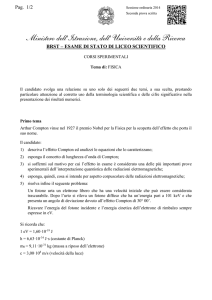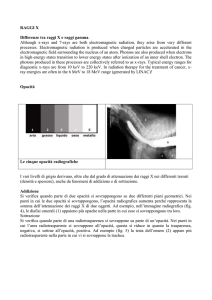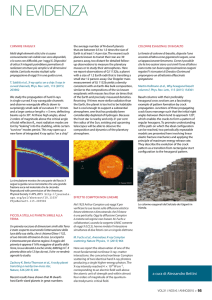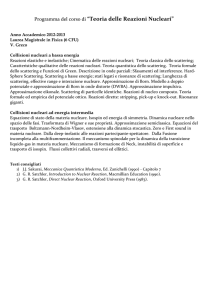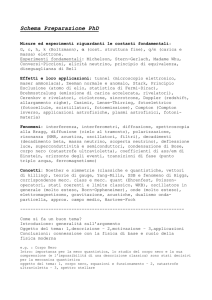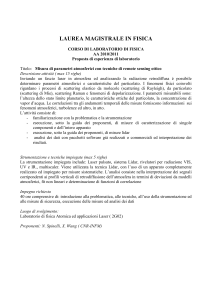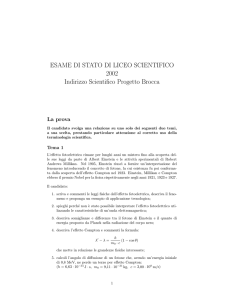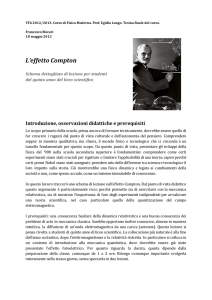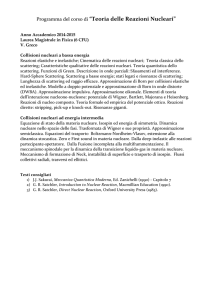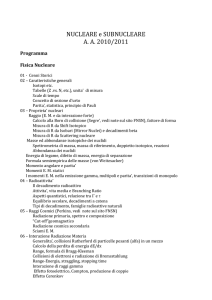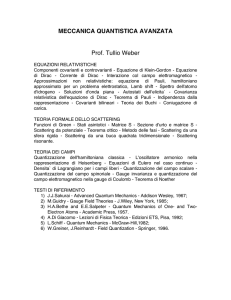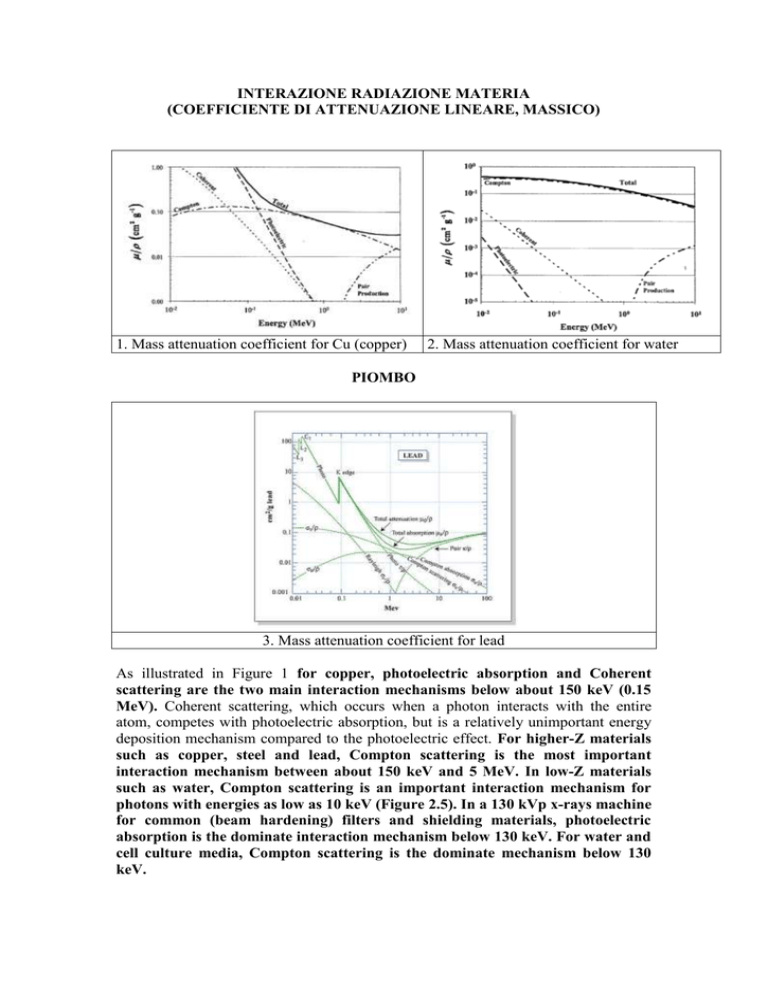
INTERAZIONE RADIAZIONE MATERIA
(COEFFICIENTE DI ATTENUAZIONE LINEARE, MASSICO)
1. Mass attenuation coefficient for Cu (copper)
2. Mass attenuation coefficient for water
PIOMBO
3. Mass attenuation coefficient for lead
As illustrated in Figure 1 for copper, photoelectric absorption and Coherent
scattering are the two main interaction mechanisms below about 150 keV (0.15
MeV). Coherent scattering, which occurs when a photon interacts with the entire
atom, competes with photoelectric absorption, but is a relatively unimportant energy
deposition mechanism compared to the photoelectric effect. For higher-Z materials
such as copper, steel and lead, Compton scattering is the most important
interaction mechanism between about 150 keV and 5 MeV. In low-Z materials
such as water, Compton scattering is an important interaction mechanism for
photons with energies as low as 10 keV (Figure 2.5). In a 130 kVp x-rays machine
for common (beam hardening) filters and shielding materials, photoelectric
absorption is the dominate interaction mechanism below 130 keV. For water and
cell culture media, Compton scattering is the dominate mechanism below 130
keV.
Perché uso il coefficiente di attenuazione di massa o massico invece di quello
lineare ?
Nelle tavole dei coefficienti di attenuazione è sempre riportato quello di massa perché
fissata una certa energia è quello che praticamente è uguale per tutti i materiali. O
meglio, precisiamo:
1) E lo stesso per le stesse “famiglie” di Z i.e. basso Z, medio Z, alto Z
2) Is the same if Compton scattering is the dominant interaction process. This is
because the atomic crosssection ( e quindi ) of Compton scattering is
proportional to the atomic number Z but the density of the material is
proportional to the electron concentration Zne, which, in turn, is proportional to
density. If the attenuation coefficient is strongly influenced by other
interaction processes (photoelectric effect and pair production), then the
expression of the attenuation coefficient includes the terms proportional to
higher powers of the atomic number Z (the photoelectric cross-section is
proportional to Z5 and the pair production cross-section is proportional to Z2).
In this case, the attenuation coefficient μ is no longer proportional to ρ (in
other words, the mass attenuation coefficient μm is no longer constant).
Quando devo stabilire uno spessore assorbente prendo il massico, lo moltiplico per la
densità ottenendo così il lineare e poi uso la legge del decadimento esponenziale.
Sono gli elettroni che attenuano i gamma e quindi più ne metto cioè più denso è il
materiale e più assorbo i gamma; è un processo probabilistico perché così mi dice la
meccanica quantistica. L’energia dei gamma è trasferita agli elettroni fotoelettrici e
compton e questa energia rimane nel mezzo oppure è diffusa con i fotoni compton e
questa esce dal mezzo!
Nella materia i fotoni a differenza delle particelle cariche non possono essere
rallentati: o sono assorbiti oppure deviati!
Compton scattering.
Da un punto di vista della meccanica quantistica lo scattering è un urto tra due
particelle: un fotone e un elettrone oppure un fotone e un atomo. Il fenomeno scoperto
da Compton è fondamentale nella storia della fisica perché dimostra che sotto certe
condizioni la radiazione elettromagnetica si comporta come una particella perché il
fotone urta in effetti l’elettrone! La sezione d’urto dipende ovviamente da Z perché Z
è il numero di elettroni di un atomo e quindi è il numero di collisioni.
Produzione di coppie.
Affinché avvenga il fenomeno è necessaria almeno un’energia di soglia pari al doppio
della massa a riposo dell’elettrone e quindi 1,2 MeV, ma attenzione che sotto i 3 MeV
la frequenza con cui avviene una produzione di coppie è molto più bassa della
Compton questo perché la cross section Compton sotto i 3 MeV è molto più grande!
LEGGE DELL'ATTENUAZIONE ESPONENZIALE
.........
spessore decivalente
......................


